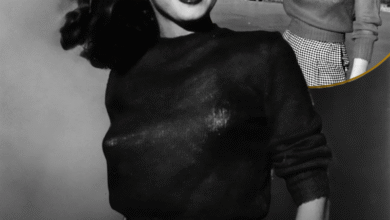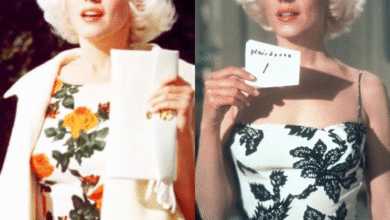Ana de Armas on Blonde’s Polarizing Reception: “It Was Not Made to Please People”
OPINION: This article may contain commentary which reflects the author's opinion.
The 2022 film Blonde—an NC-17-rated psychological drama exploring Marilyn Monroe’s turbulent life—has sparked intense debate since its release. Starring Ana de Armas in a daring portrayal of the iconic star, the film takes a dark, fictionalized look at Monroe’s experiences, touching on trauma, exploitation, and the harsh realities behind fame. Adapted from Joyce Carol Oates’ Pulitzer Prize-finalist novel, Blonde debuted to a standing ovation at the 79th Venice International Film Festival before becoming the first NC-17 film to premiere exclusively on Netflix.
Ana de Armas, born in Cuba and cast against the odds as an American cultural icon, received widespread acclaim for her performance, earning an Oscar nomination for Best Actress. Yet the film itself garnered a divided response—praised internationally but heavily criticized in the U.S., including a record eight Razzie nominations, such as Worst Picture. De Armas has openly addressed this polarization, offering insight into the film’s intentions and its challenging reception.
A Role “Against All Odds”
De Armas spoke candidly to The Hollywood Reporter, PAPER Magazine, and MovieWeb in early 2023 about her experience with Blonde. She described her initial reaction to the script as “shocking,” comparing it to a horror movie, and noted that her Cuban background allowed her to approach Monroe’s story without entrenched American preconceptions. This fresh perspective informed her nuanced performance, bringing complexity to an icon often reduced to myth.
Not a Film Made to Please
Central to De Armas’ message is that Blonde was never intended to comfort or please audiences. “It was not a movie that was made to please people or to make people like it. It is a hard movie to watch,” she stated, acknowledging the film’s graphic and disturbing content—including intense scenes of violence and sexual abuse. Importantly, she emphasized that the film critiques the environment and industry that contributed to Monroe’s struggles rather than attacking Monroe herself.
“It’s not slandering Marilyn; it’s speaking badly about the system,” De Armas explained. The film invites viewers to confront the dark side of fame and the price paid by public figures caught in exploitative systems.
A Divided Reception: U.S. vs. International Audiences
Blonde’s reception has varied sharply by region. At international festivals such as Venice and San Sebastián, the film was met with warmer applause—Venice audiences gave a remarkable 14-minute standing ovation. However, in the United States, the response was more critical. Some U.S. viewers and critics took issue with the film’s liberties, especially controversial scenes like a graphic depiction of sexual assault and a CGI fetus segment interpreted by some as anti-abortion commentary. Critics were split between condemning the film as exploitative and celebrating De Armas’ commanding performance.
De Armas acknowledged this divide: “When we premiered the movie in Venice, or San Sebastián, [the reaction was much warmer than the reception was in the U.S.]. Of course, the reaction that gets the most attention is the one in the U.S., but that wasn’t the whole experience.” Her comments suggest a cultural difference in how the film’s provocative themes are perceived, with international audiences perhaps more receptive to its arthouse style and feminist undertones.
Artistic Intent: Challenging the Audience
Beyond controversy, De Armas highlights Blonde’s intent to implicate audiences in the cycle of exploitation. “The movie shows the other side of [success and fame] and the price that you pay for that,” she said, aligning with Joyce Carol Oates’ characterization of the adaptation as “feminist.” The film’s shifting aesthetics—alternating color palettes, black-and-white sequences, and variable aspect ratios—reflect Monroe’s fractured life stages and contribute to its immersive, unsettling atmosphere.
Critics note that Blonde doesn’t allow viewers to passively observe; instead, it forces a choice—to continue watching or to turn away—as De Armas fully embodies Monroe on screen. While many praise the film’s bold visual style and De Armas’ tour de force performance, others view it as chaotic and incomplete, veering from a fully developed biopic into a personal, impressionistic passion project.
Blonde remains one of the most polarizing films of recent years—a challenging meditation on fame, trauma, and the cost of celebrity. Ana de Armas’ fearless portrayal and her reflections on the film’s intent underscore a cinematic experience that dares to provoke rather than pacify, inviting audiences to reckon with the harsh realities beneath Hollywood’s glamour.



